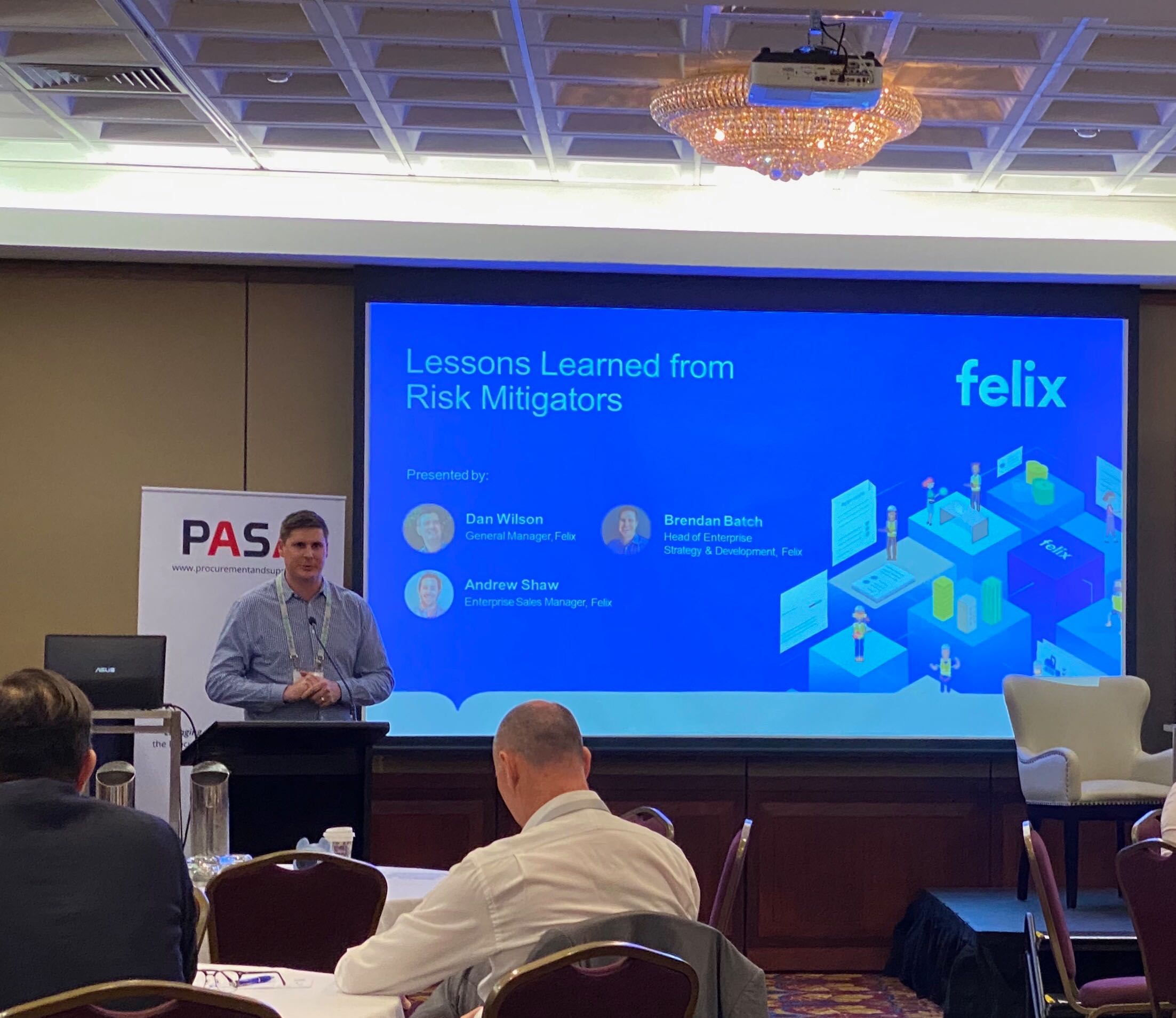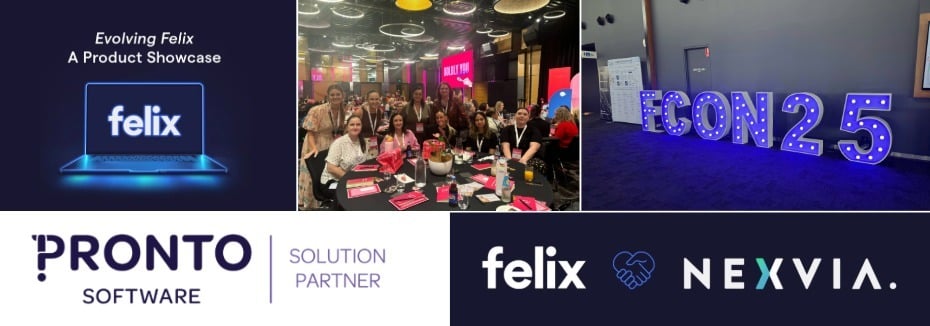After attending PASA’s Brisbane-first ProcureTECH event in the week gone, we picked up a few things about the aches and pains procurement teams are still facing every day.
Not only did we run an interactive session where attendees worked on an imaginary case study identifying common procurement-related risks, but we learned a thing or two from our fellow speakers and formed interesting conversations throughout the day.
Whether you were at the event or not, here are some highlights as food for thought...
The love-hate relationship with the legacy tool Excel
Do you believe that 94% of all spreadsheets contain errors? How many times have you been stopped in your tracks because of a spreadsheet issue? How about poor version control and hard coded values in cells that you’ve found out too late?
There was some reminiscence mixed with cautionary tales about the use of Excel. The speaker cited some famous “Excel gone wrong” stories:
- Enron: 24% of corporate spreadsheets with formulas contained errors
- A spreadsheet error resulted in Solar City’s value being discounted by $400 million
And yet many organisations are still using Excel in procurement (if not just paper), and many software packages still allow the export of data into Excel format. It could be a sign that the more advanced technology in place wasn’t used to its full capacity due to inertia, lack of training, or buy-in from the start.
Industry stats around maturity plus self-assessment
It wasn’t just about the tools. Processes and people were also crucial factors in assessing the maturity levels of companies in procurement.
We cited some global and local stats such as:
|
Global |
Australia |
|
|
These stats shared a similar theme with the pre-transformation story at North Queensland Airports (NQA) group. We heard the anecdote from the Finance Digital Transformation Leader who led the initiative after many years of working in accounting for NQA:
- There was no procurement department or a dedicated procurement role
- Most purchases were made in a decentralised manner
- Phone calls were the main means of communication between buyer and suppliers
- There was a lot of after-the-fact spend and limited visibility of costs
Interesting stats also emerged from the self-assessment survey based on the Contract Lifecycle Management Maturity Model by Gartner. For instance, event attendees rated themselves at only 30% maturity in terms of risk management and technologies.
Talk dirty data
Before embarking on a digital transformation journey, or putting in a system, it’s important to have clean data. We mentioned in our session that 57% of CPOs in a recent global survey by Deloitte said quality of data was the main barrier to tech adoption in procurement. Other speakers echoed the view.
If you don’t know your current cost of raising a PO, how could you quantify the value from implementing a new system, either to get buy-in or to measure long-term performance?
Towards digital procurement
Speed is the currency of business. But procurement traditionally slows down the organisation due to the need to enforce compliance. If you look at the word cloud below, procurement seems to have a bad rap for being “blockers”, “roadblock”, “barrier” and so on.
However, if that doesn’t change soon, procurement could see their relevance diminish in the sphere of influence.
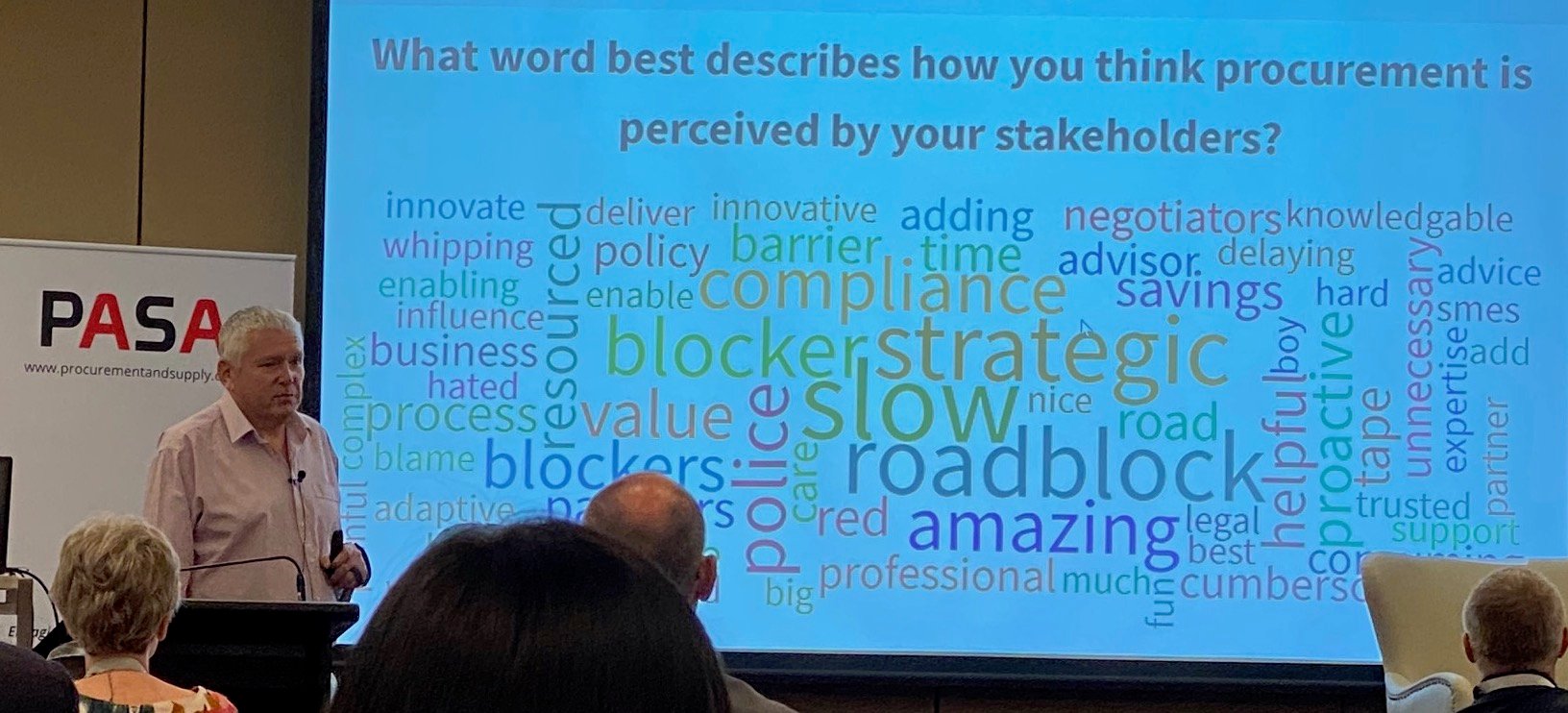
The solution?
Procurement needs to be obsessed with its internal customers and reduce friction throughout the buying process.
But this is at odds with procurement’s natural role – which is enforcing compliance. Procurement also tends to choose the path of least resistance because it’s easier to measure than customer centricity.
To resolve this, we need to apply new technology AND new thinking
The speaker mentioned this formula wasn’t anything ground-breaking as it’s been applied to other business functions.
Essentially, it is a marriage of service design and digital architecture - which increases the likelihood of user adoption and decreases implementation risks.
This table contrasts the two approaches organisations might take towards digitising procurement.
| Traditional approach | Service design approach |
| Inside out | Outside in |
| Infer user needs - design processes - Select system | Genuinely understand user needs |
| Imposing | Co-designing |
| Requires change management | Reimagines experiences |
| End-users create workarounds | Build capability to deliver target experiences |
Whilst not a lot of organisations have fully embraced the Service Design approach, they have realised the need to have the right stakeholders involved at the start.
Let's come back to the NQA’s digital transformation story. The speaker mentioned not only the importance of having a closed feedback loop between procurement and finance, but also the need for those stakeholders to set aside time for the digital transformation initiative.
It wasn’t just internal stakeholders that you need to sell to, there are external parties such as suppliers too, particularly if they are not very tech-savvy.
The digital architecture side of the equation
The modular nature of manufacturing is now in software architecture as well. Instead of putting in a monolithic enterprise system for procurement, people can now pick and choose modules to match their needs.
The beauty of this is that these modules don’t have to come from the same software vendor. Hence, there’s a growing demand for software vendors to "play nice" and let their software packages talk to each other.
Now if you take this up to a higher level and look further into the future, there is a possibility that enterprises will custom-build a common UI layer that sits on top of all the separate modular systems for different business units (e.g. procurement, HR, ERP etc.)
More mentions of agility, scalability and user experience
Gone are the days of clunky on-premise software implementation fraught with issues. Agile delivery is the way forward, which aims to reduce risks by starting small, and starting right.
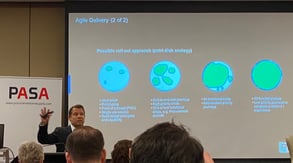
Using the petri dish analogy, the speaker suggested tackling a single business use case with technology to make sure the results are satisfactory before rolling it out to the wider department. Similarly, various speakers also touched on the importance of having a system that can scale with the business.
Moreover, corporate end-users are expecting consumer-grade user experience. If you don’t want people to revert to the old ways (e.g. Excel, paper), choose a system that is intuitive enough to minimise friction and reduce training costs.
Risk mitigation and sustainability
Risks can come from having inefficient processes and tools – such as the cautionary Excel tales mentioned above. But risks can come in various shapes and forms.
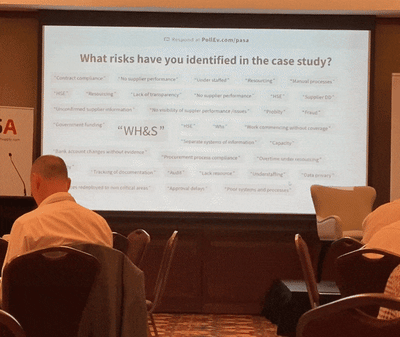
In our session where we asked attendees to pick out risks from an imaginary case study, we got more than 80 responses. Whilst it might be easier to find faults in others, it’s still a worthwhile exercise as a form of self-reflection.
Want to have a go at marking the risks yourself? Download the case study and cheat sheet here.
Compliance is a growing area of focus. Other speakers also mentioned the need to meet various sustainable procurement requirements, especially if you are working with/for government bodies.
Ensuring tech adoption post-rollout
In another presentation, the speaker gave some interesting examples around ways to increase internal software uptake. He suggested almost a branding exercise to help internal stakeholders form close association with the system, which in turn would form a usage habit.

It could be as simple as using meaningful (and perhaps fun) acronyms, such as:
- Contracts and Procurement Reporting System (CaPRS)
- Supply Chain Reporting Analysis Management System (SCReAMS)
- Contracts Reporting Evaluation Analysis Management (CREAM)
- It didn’t stop at naming. The speaker cited other ways of endearing the system:
- Having a physical artefact around the workspace: a jar of capers (for CaPRS)
- Upon successful training, receive a certificate saying “You’ve been creamed” (for CREAM)
Tech is an enabler, not a tool
Last but not least, it’s important to realise that implementing technology is not a simple tick-box exercise. People are increasingly fatigued with system-led optimisation, hence the growing influence of the Service Design approach mentioned above where systems are designed around people and processes.
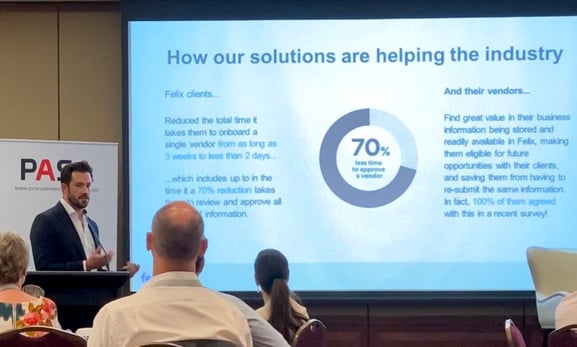
Here are the 4 ways organsations go about deploying procurement tech. Which camp are you in?
- Optimise existing system
- Buy out-of-the-box and optimise
- Go full-on with a digital procurement approach
- Buy out-of-the-box and don’t optimise
Interested in finding out more about Felix? Get in touch with us today! Or leave your comment below to start a discussion.

Recent Articles
2025 in review: Milestones, insights and achievements
2025 – a year of that brought meaningful developments for Felix as we continue to address the evolving needs of organisations navigating complex supply-chain environments.
Top 10 reasons for a centralised vendor database
As organisations grow, so does the complexity of managing vendor relationships. Many still rely on spreadsheets or siloed systems, which can lead to inefficiencies, data inconsistencies, and compliance risks. A centralised vendor database offers a smarter, more scalable solution that brings structure, visibility, and control to procurement operations.
Here are the top 10 reasons why centralising your vendor data is a strategic move.
Five ways poor contract storage could be costing your organisation money
Contracts are the backbone of every business relationship – legally binding documents that define expectations, responsibilities, and value.
But what if the way your organisation stores those contracts is quietly costing you money?
Let's stay in touch
Get the monthly dose of supply chain, procurement and technology insights with the Felix newsletter.
